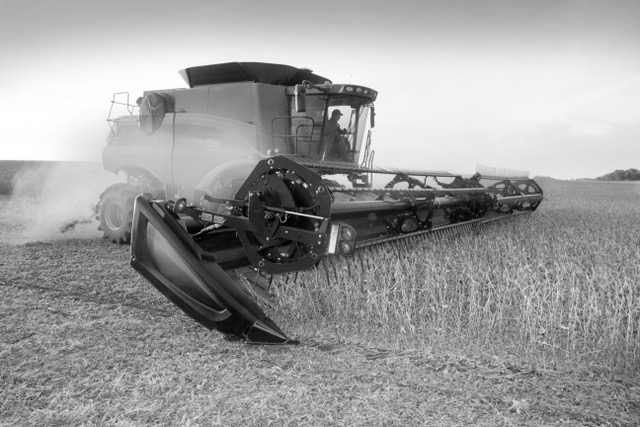Draper Header Q&A with Rod Koch, Blog Post

Farmers have relied on combine harvesters for decades to harvest cleaner grains, reduce crop loss, and reduce the amount of manual labor needed during harvest season. Combine attachments are also continually being designed and developed so growers can reap more and faster. The draper header, whose history spans a century, is rooted in innovation that actually started at Continental’s Wahpeton facility – formerly WCCO Belting – in the early 2000s. By 2012, WCCO Belting’s patented RAPTOR® Draper Belting hit the market using a filament fabric that is stronger, more tear resistant, and more puncture resistant than previous materials. It quickly became the gold standard for agricultural equipment manufacturers and growers around the world.
To learn more about draper headers and how to properly take care of them, we asked Rod Koch, plant manager at Continental’s Wahpeton facility, where WCCO Belting products are manufactured – including RAPTOR Draper Belting – for some tips and tricks to extend the life of a draper header belt. Here is what he shared:
Q: How do I know when I need to replace my draper header belt?
A: Like car tires, knowing when you need a new belt is somewhat subjective. If the belt is slipping, damaged or has rips or tears due to rocks or debris, it’s time to swap it out. Additionally, if the belt doesn't spin or if the crop doesn't move, you know you need a new one. We recommend changing the belts in the off-season when you aren’t in the middle of harvest to avoid downtime.
Q: Why do draper belts turn chalky white? Is this something I should be concerned about?
A: Similar to how copper turns green as it ages, rubber can turn white with age as oils and waxes in the belt come to the surface over time. This white, chalky residue is the belt’s protective film serving as a built-in protection system against the environment and is nothing to worry about.
Q: What are some tips and tricks to extend the life of a header belt?
A: If possible, turn the belt over. The header design has to be symmetrical from top to bottom. If your belt has a center V guide, double V guide or no V guide, then you could flip the belt upside down and continue using it. You can also reduce the tension on the belt during the off season, especially during the cold winter months. Rubber contracts when it is cold, so it becomes over tensioned in the wintertime, which can lead to premature belt fatigue. Reducing the tension in the off-season can help keep the belt working properly when you need it most. Also during the off-season, keep the machine and belt out of direct light. UV rays are hard on any rubber and can damage the belt.
Q: How do I install a new draper belt?
A: A new belt, when it is squeaky clean, is challenging to install. One trick is to coat the back side of the belt with baby powder or drop it in the dirt to get it dirty, which will give it some lubricity and reduce installation drag to help lubricate the belt. This should make installation easier.
Q: When is the best time to replace belts?
A: Taking care of your belts in the off-season will prevent in-season downtime. There is a cost-benefit to assessing your machinery in the off-season and making replacement purchases at that time, when you’re likely to get a lower price than in the height of the season. Checking your equipment can offer peace of mind knowing your machine will run smoothly during harvest and better protect your bottom-line.
Q: What is the best option for a replacement part? Do I need to buy an OEM belt?
A: An OEM belt is almost always a better quality belt which leads to longer belt life and a better value proposition for the customer. We always recommend buying an OEM belt that is made specifically for your machinery to ensure optimal performance. As an OEM belt provider ourselves, we work hand-in-hand with header manufacturers to maximize value for customers.

